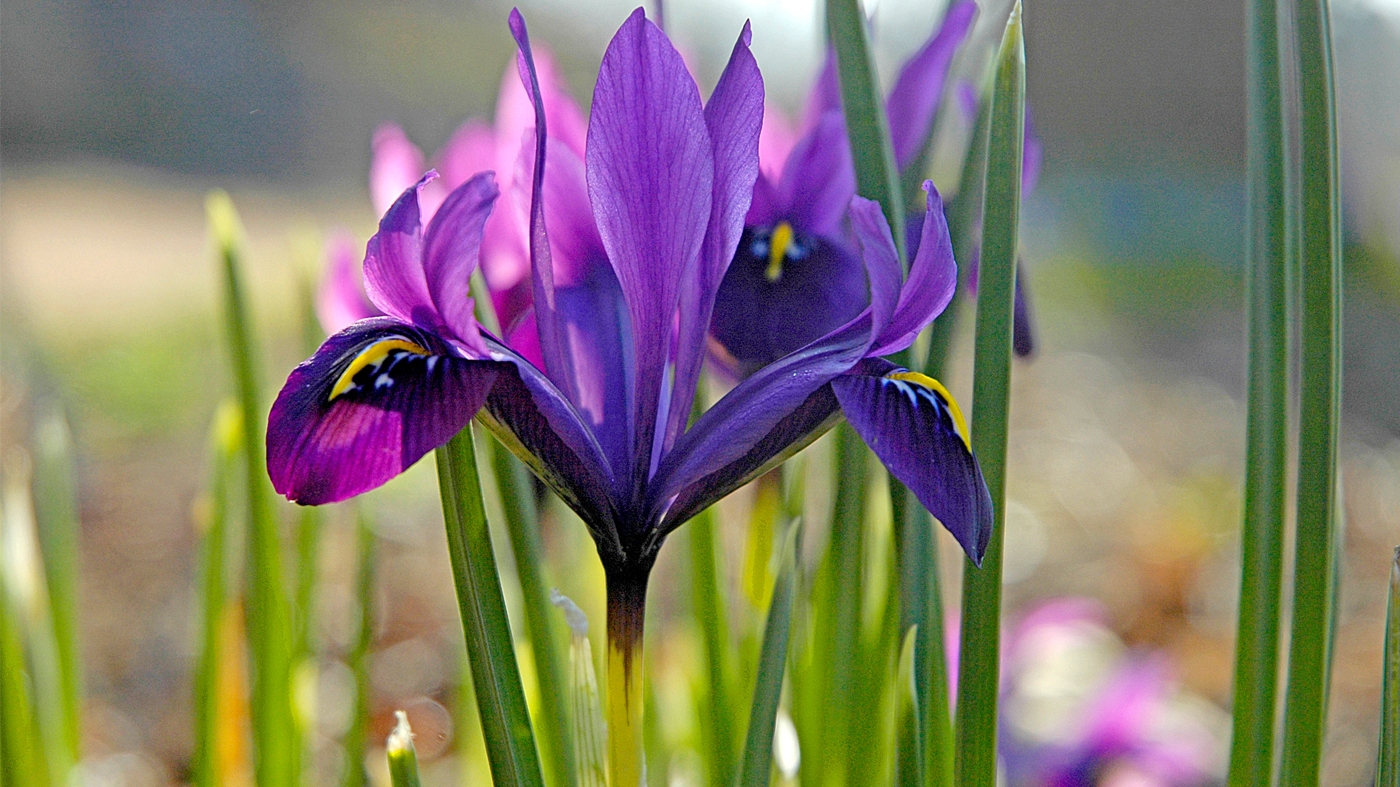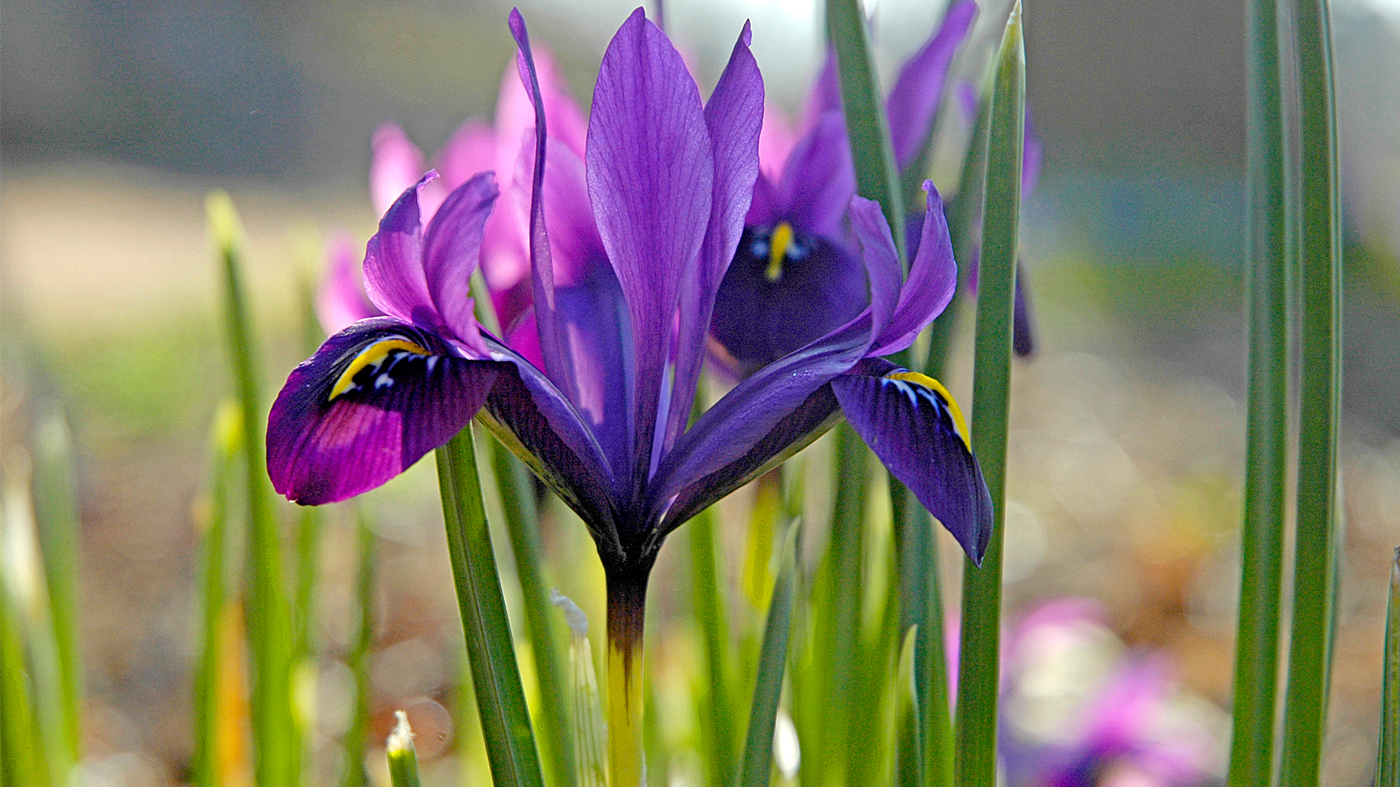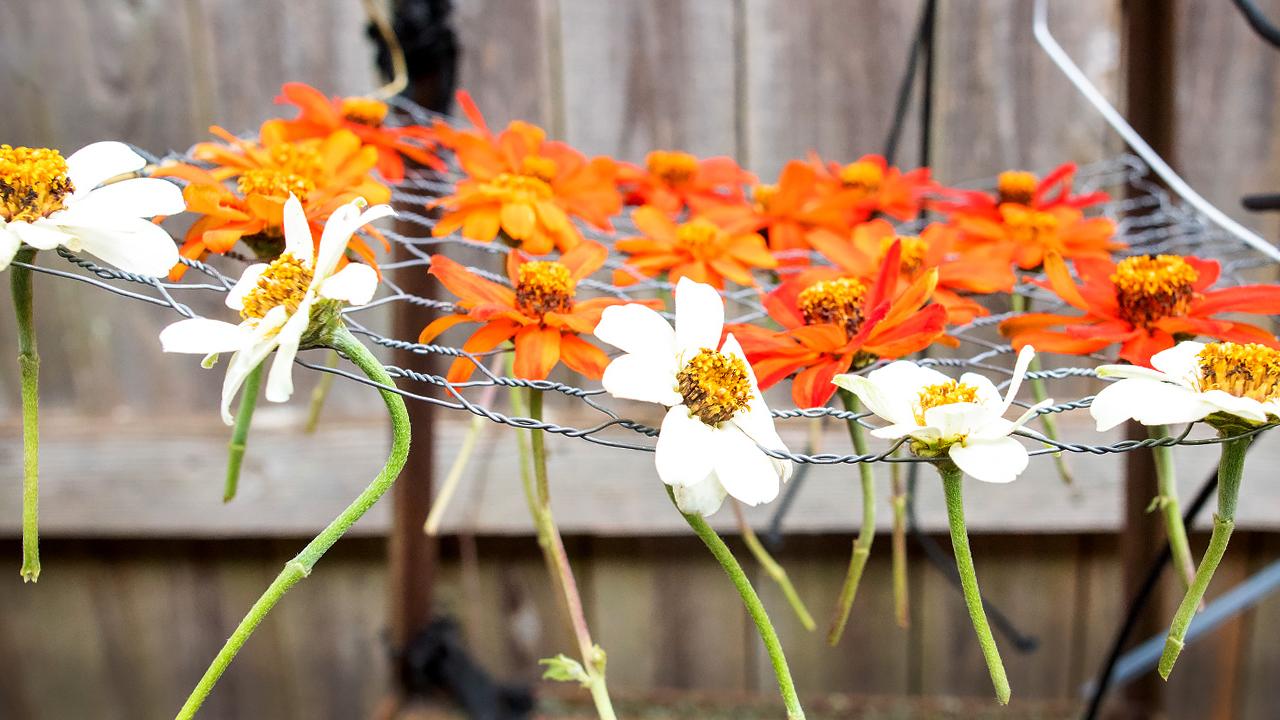

How-to
Garden Stories
D.I.Y. Mustards
What’s the oldest thing in your refrigerator? Chances are that it’s the almost-but-not-quite-empty jar of mustard.
Conditioned by decades of backyard barbecues, brightly colored squeeze bottles, and grab-’em-by-the-handful packets, Americans are at last tuning in to the taste of homemade condiments.
The time has come for homemade mustard—and you won’t believe how easy and tasty it is.
Start with the Basics
As always, we turned to program horticulturist Nancy Clifton to learn the how-to’s. Within five minutes of starting her demo for us, she had the first batch of mustard whipped up:
½ cup dry mustard powder*
¼ cup cool water (see tips on temperature below)
¼ cup white vinegar
¼ teaspoon salt
2 to 3 teaspoons honey
Whisk ingredients together. Pour into clean Mason or Ball jars and set aside on a pantry shelf for two weeks, to allow the spice’s heat to mellow to the degree desired. Sample out of one jar periodically to test the heat level as you wait. It takes about two weeks for mustard to reach “mild.”
(*Local to the Chicago area? Find mustard powder available in bulk at Penzeys or The Spice House, or purchase online.)
Mustard-making Tips
- Mustard powder makes a much stronger spread than mustard seeds. Best bet? A combination of both.
- Hot water mellows mustard’s heat—use hot instead of cool in any recipe if you prefer less bite.
- Soak whole grain seed in vinegar and water for 48 hours to soften it before using it in a recipe. Keep the seeds submerged, not floating.
- Freshly made mustards should mellow for 2-4 weeks at room temperature on a pantry shelf. Refrigerate after the desired pungency is reached. Homemade mustards last 6 to 12 months in the refrigerator.
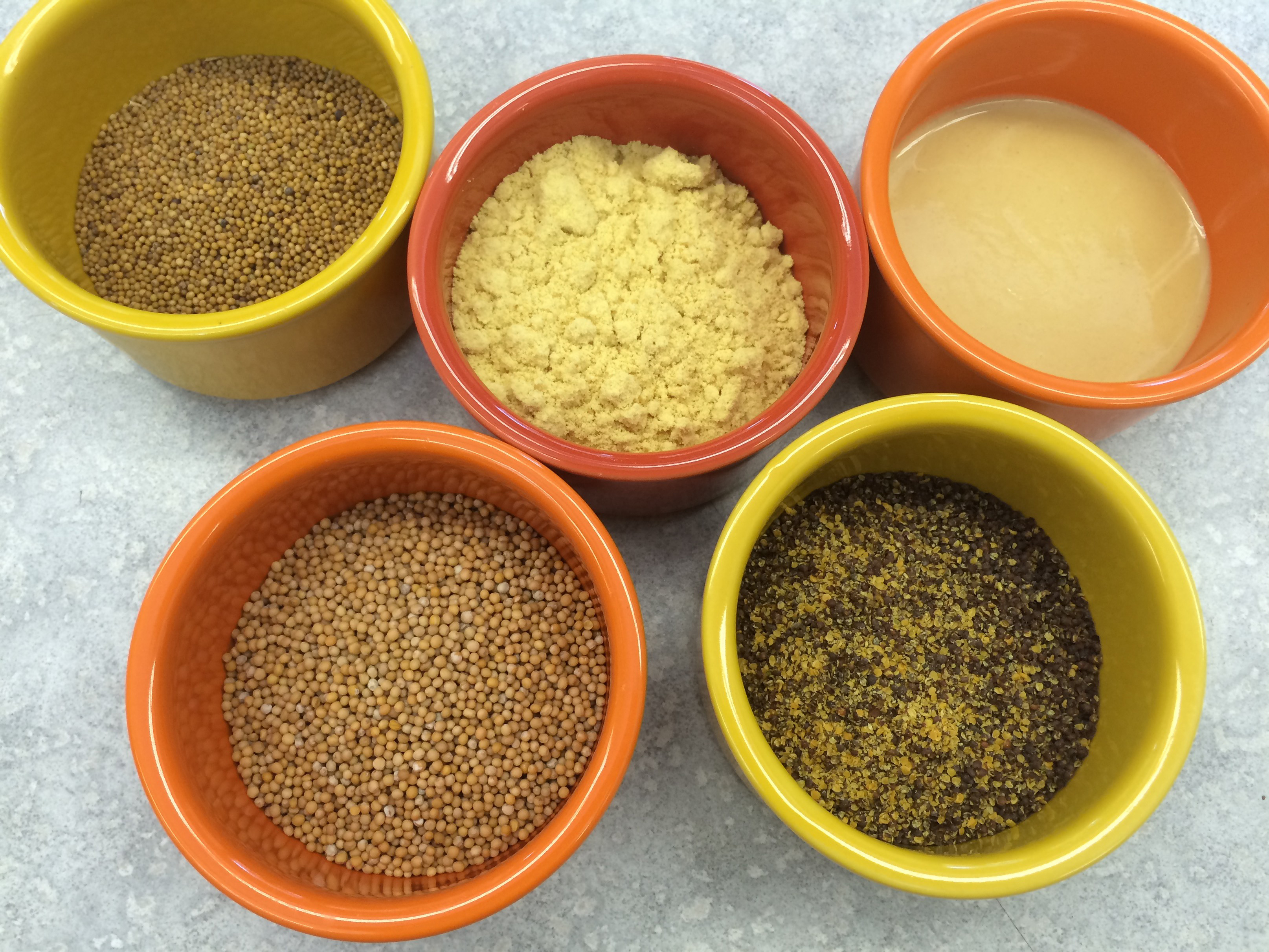
Clockwise from top left: hot mustard seed, yellow mustard powder, a finished basic yellow mustard, brown crushed mustard seed, and medium-hot mustard seed.
Next, Get Creative
After making that first quick batch of basic mustard, Nancy passed around ten jars of flavored mustards for us to sample. Revelations all!
By tinkering with the basic ingredients—using cider or champagne or balsamic vinegars, adding fresh or dried herbs, experimenting with different whole mustard seeds, adapting recipes from cookbooks and the web—Nancy had us all exclaiming over the freshness, complexity, and surprise of mustards in these flavors:
- Basic Mustard with Summer Savory
- Herbed Tomato Mustard
- Dilled Mustard
- 5-Spice Mustard
- Balsamic Vinegar Mustard
- German Whole Grain
- Dijon
- Grainy Mustard
- Herb & Shallot Mustard
- Jalapeño & Cumin Mustard
A Hot Gift Item
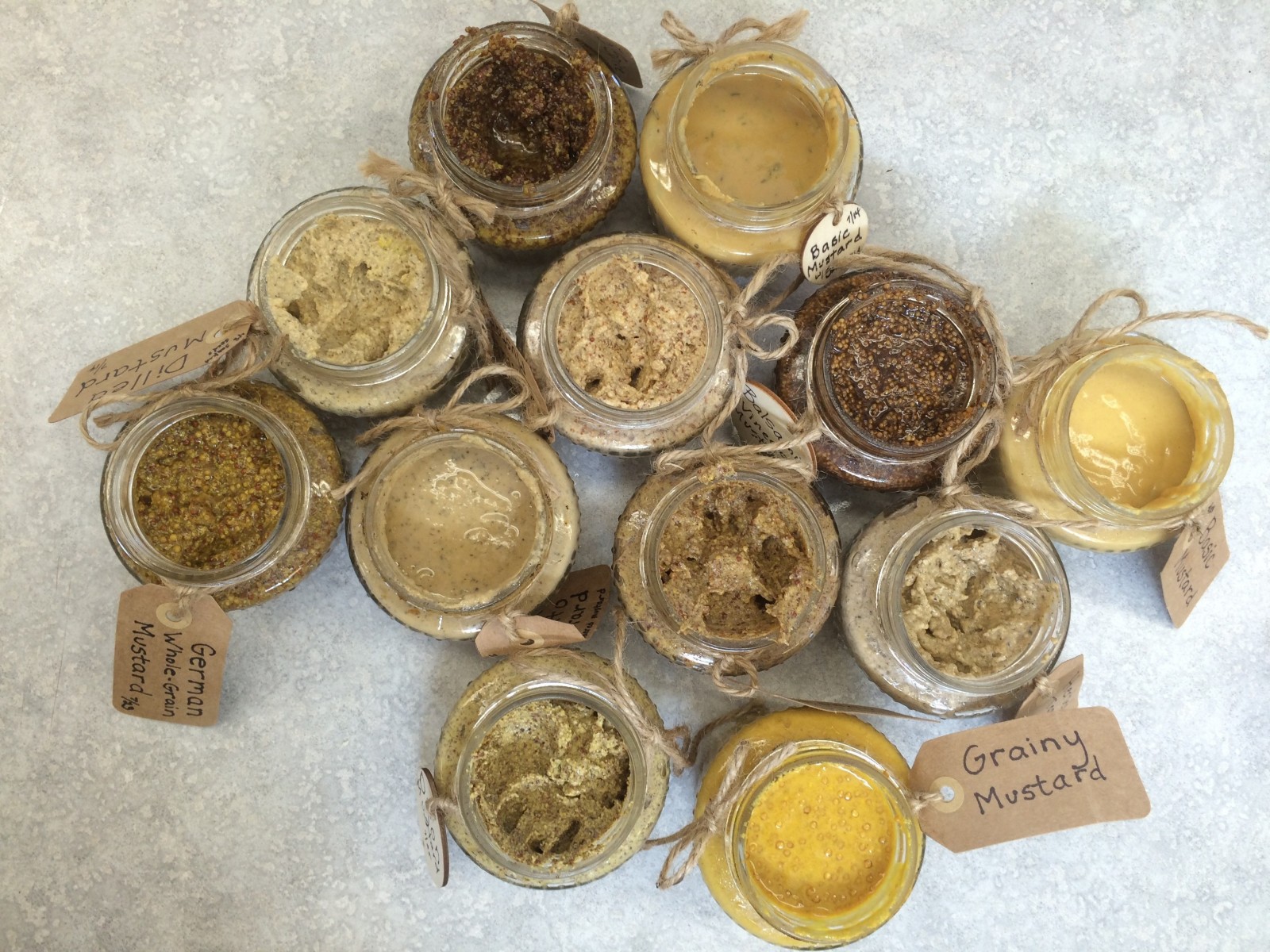
Homemade mustard in a single jar or assortment makes a great gift that’s sure to be enjoyed!
Homemade mustards make awesome gifts. Need a football season party gift? Check. Hostess gift? Check. During the holidays, gift neighbors, co-workers, and foodies with a package of three different mustards in quarter-pint jars—delicious and memorable!
Experiment, and build your gift stock—remember that it takes a couple of weeks for mustard to mellow—and the next time you’re cleaning out the refrigerator, recycle that old jar of yellow stuff and replace it with a jar of your own fresh, tasty, homemade mustard.
The Plant Connection
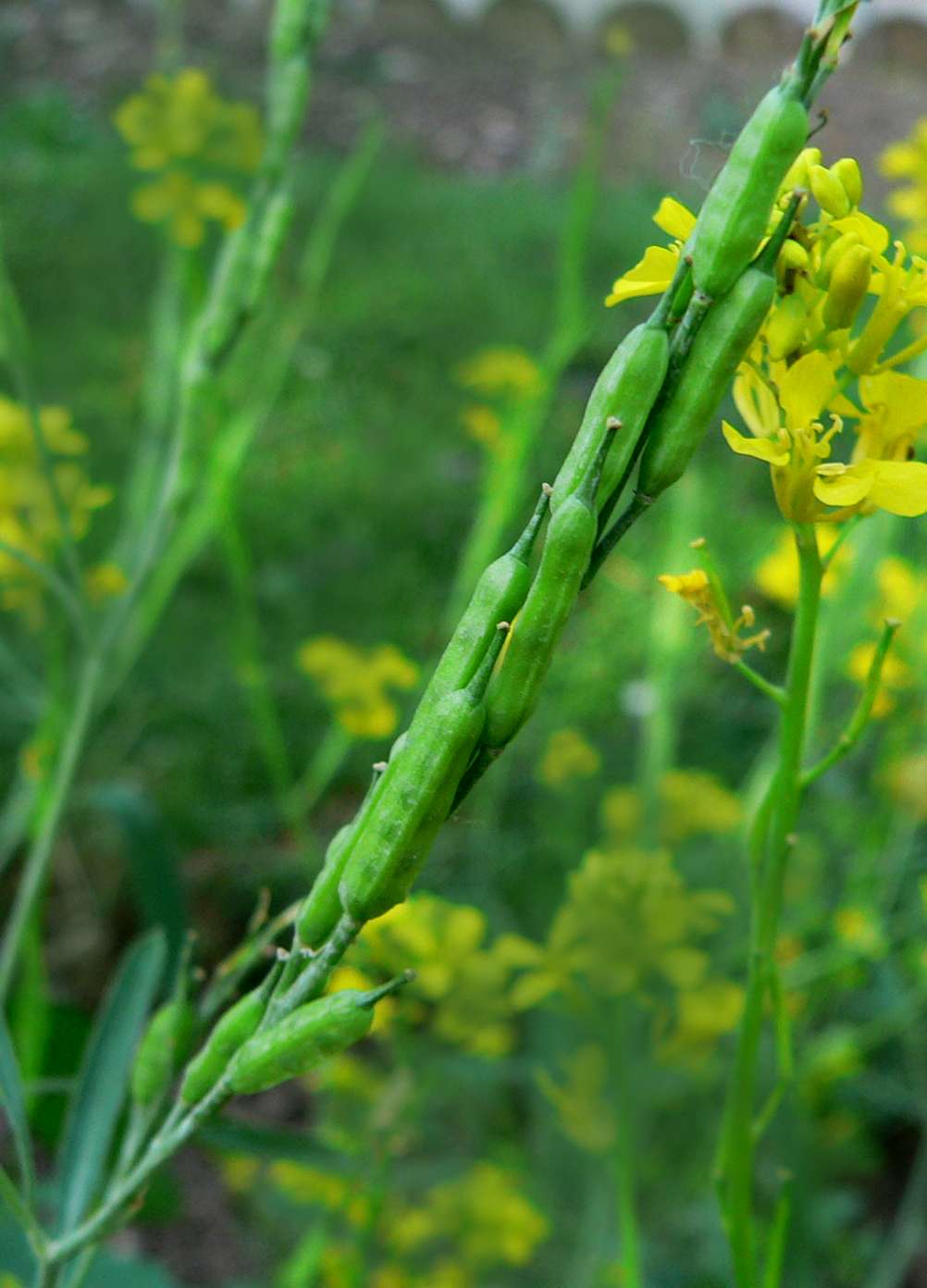
Brassica nigra in seed and in flower. The seeds are contained in conical pods called silique.
Yes, mustard seed comes from a plant—three different plants, in fact. All are in the Brassica family.
Brassica nigra = black mustard seed
Brassica juncea = brown mustard seed
Sinapis alba = white mustard seed
And yes, you can grow your own mustard plants for seed—just be sure to harvest it all, as mustard can quickly self-sow and take over a garden bed.
